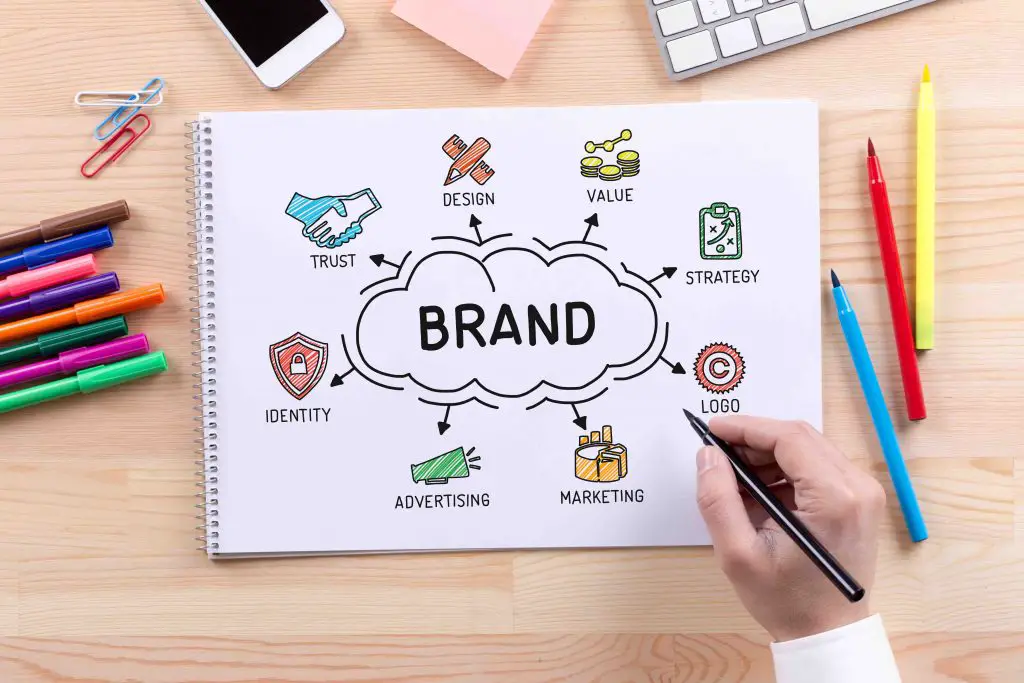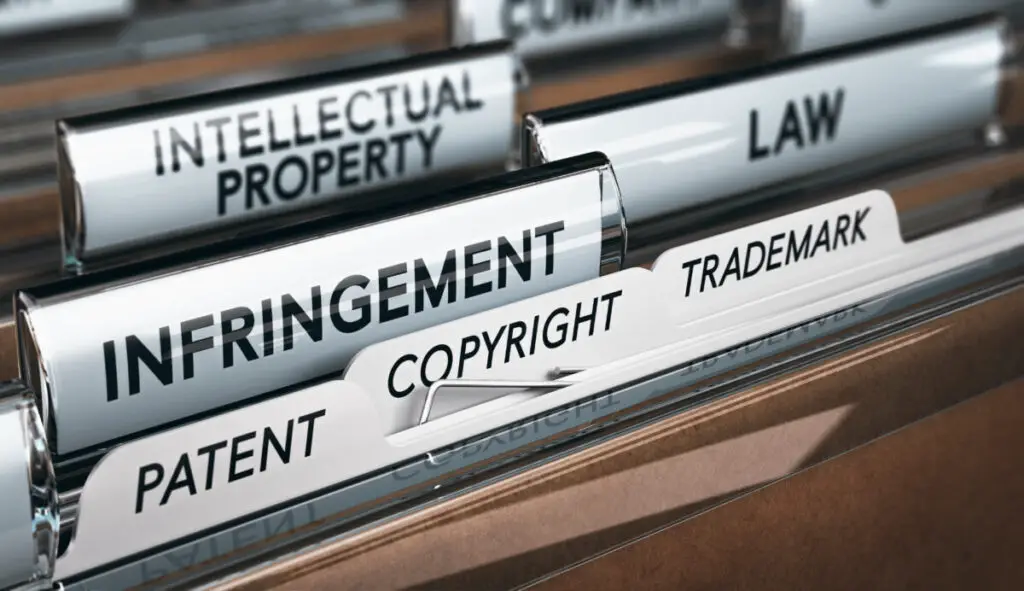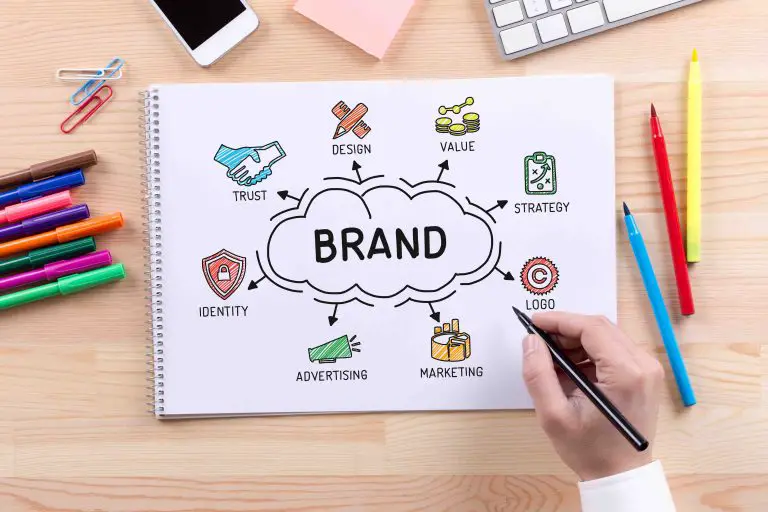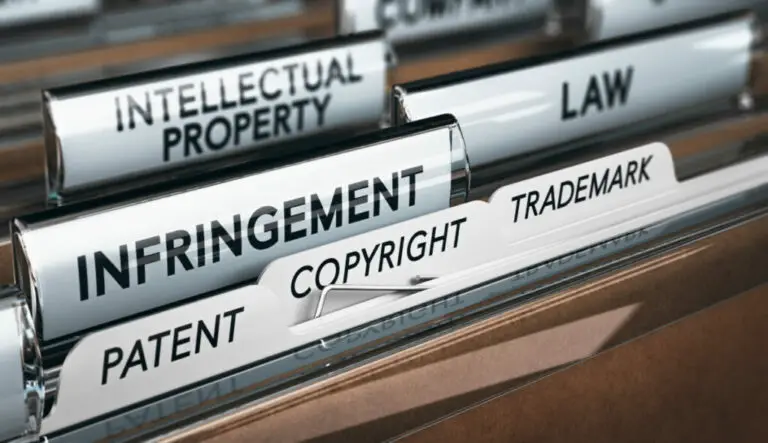How to protect a brand name

Branding is extremely important for any business or corporation. You want to make sure that your products and services are easily recognized by consumers. Something as important as a brand name needs to be protected.
A brand should be protected through legal action as well as various deterrent measures that prevent future issues. Obtaining legal rights, claiming online real estate, avoiding information leaks, and being aware of competitors will all work together to protect a brand and help ensure its success.
Taking the proper steps toward protecting your brand is crucial for business success. The are several different methods you should be aware of for the best protection possible.
What is a brand?

Having a unique brand is how a business or company and its products are marketed and perceived by consumers. It is a conceptual representation of the goods or services and the values or concepts that may be associated with them. A brand will typically involve a name and maybe a logo or slogan but also includes more intangible feelings and thoughts that are involved in a representation. A brand is based on the way consumers perceive the company and its products.
Some parts of a brand can be highly controlled by the company such as what they decide to name the business or what kind of design they use as a logo. Ultimately, the branding is determined by customers and the way that they choose to interpret the branding tools used by the company. Of course, the business likely has a certain image that they are trying to achieve through their branding tools. It is crucial to take into consideration how the public will interpret certain branding.
Conceptual identifiers such as reputation, personality, character, image, and culture all help form a brand in combination with the more physical brand name and logo. The overall brand is the way that consumers can identify a certain product or company from another and is a huge part of the way that the public forms preferences. A successful brand can make or break a business’s success and so it needs to be protected.
Legal Protections
Some of the strongest protections for your brand will be legal. Legal protection will give you powerful ammo in defending your company’s place in commerce. There are multiple different legal protections, namely trademarks, patents, and copyrights.
A trademark will protect against imitation and unauthorized use for the less conceptual and more tangible parts of your brand. A trademark can be any combination of words, symbols, images, or phrases that you use to identify and market your brand. Things like names, slogans, and logos are perfect candidates for a trademark.
Technically, you “own” a trademark as soon as you start using the words or images to mark your goods or services in commerce. However, going to the next step and registering your trademark is what will give you the legal rights and protection that you want. When you do register, consider the scope of protection that you want. Likely, you will want to be protected in both domestic and foreign commerce. Make sure you apply under the Madrid Protocol with the U.S. Patent and Trademark Office (USPTO) to get legal rights around the globe. (source)
The USPTO also can help you patent any unique inventions or processes that you are selling with your brand. If your brand is based on a brand new invention, you will want to get a patent. A patent will give you the right to stop other brands from making, using, or selling the same unique technology. It will make your process, machine, or design become your legal property.
There are three types of patents called utility, design, and plant patents. Likely, a company would use either a utility or design patent to protect its brand. A utility patent is for the discovery or invention of either a new and helpful machine or process, or a new improvement to an existing process. The utility patent is focused on the ways something is used or functions. A design patent is more focused on the way something looks. This type of patent gives someone rights if they a new design for a product. (source)
Copyright is another good way to obtain legal protection for your brand. You will want to obtain copyright through the U.S. Copyright Office. Copyright will provide legal protection to “original works of authorship” as works of art. To be copyrighted, it must be a creation, rather than just a use of something that already exists. The creation could be musical, literary, graphic, audiovisual, or architectural but must go beyond familiar symbols or simple phrases.
For this reason, a brand name or slogan would not be subject to copyright. However, you could copyright a jingle or a logo as long as it has an artistic design element beyond just the name or a common symbol. A copyright will protect any creative work that you have put into creating a brand. (source)
Obtaining these legal rights and protections as soon as possible will help you avoid any hassle, and shut the door on any competitor’s opportunity to steal material. If you don’t have the rights, a competitor could imitate or manipulate your brand. Even worse, they could get the rights to your material themselves and then use them against you. Make sure you are protecting anything and everything possible that helps create your brand image.
Reserve an online presence

The importance of web presence cannot be ignored. The internet opens up huge opportunities for marketing and selling that many consumers find to be more convenient than the in-person alternatives. The internet can be used to educate, advertise, and sell to the public.
Make sure that you immediately stake claim to any domains that you could possibly want for your business or even any domain that you simply do not want anyone else using. You will want to buy the .com, .net, and .org versions of whatever site you use for your business. Of course, you do not actually need to publish content on all these domains as that could confuse consumers. However, when you own the domains, no one else can very successfully imitate your website and profit off your hard work.
You may be thinking, if I have my name and logo trademarked then why would I worry about the other domains? The trademark will stop anyone from using your name and logo on a site, but it does not stop them from potentially owning the domain. If a competitor is able to purchase a domain with your name before you, they can then turn around and re-sell the domain to you for a much higher price when you discover that you need or want ownership.
The same guidelines apply to social media. Facebook, Instagram, Twitter, TikTok, etc. are huge game-changers for marketing. This is where the public will see your company and your brand and form their opinions and perceptions. Make sure you claim the handle you want for any popular social media app. If you don’t, it may cost you a heavy fortune to purchase the handle from the existing user.
One additional way you can secure your web presence is by purchasing a top search result presence for certain keywords in Google. You have probably noticed that the first few results on a lot of Google searches are marked as “Ad” on the left. You can purchase an ad position for any keyword that someone may put into a search engine. Spending a little extra money for your spot on the results page ensures that the public is going to see your brand when you want them to.
You definitely want your site to come up first if they are searching your brand name, but you also may want to bid on other keywords that identify the products you sell. For example, if you are an auto shop, you may want to bid on the keyword “oil change”. You can also take a more aggressive route and bid on your competitor’s brand names. You may be able to steal potential customers from competitors’ sites and instead direct them to your information. (source)
Non-disclosure agreements
Drafting solid non-disclosure agreements for employees, partnerships, and any independent entities you work with helps protect against fraud and information leaks. Every good business will have something special or unique that they rely on to create success. A good non-disclosure agreement will prevent unauthorized use or sharing of your private information.
This is the best way to stop business secrets from making their way to competitors. Another similar business would be eager to talk to and hire any former employees or partners if they were legally allowed to share the important information about the way your business functions.
Monitor competition

Take some time to become familiar with the other players in your game. Know what companies are targeting your same market, and learn everything you can about them. Understanding what customers are considering when they look to buy your good or service can provide helpful insights on where you can improve and edge out the competition.
You also want to be aware anytime a competitor is making a direct play against you. You may be trying to win more customers by bidding on the brand name of a related business on Google search results. However, they could be doing the same thing back to you. Take inventory of the other advertisers trying to win a spot in the results of the keywords that you want dominance over. This can help you identify potential threats and dissolve their influence before too much damage is done.
To learn about your competition, you probably have done a simple web search and clicked on some top results to get an understanding of what they’re all about. Consider monitoring your own brand in the same way. Go from the consumer’s perspective and see what a simple web search is showing the public about your brand. Is it portraying the image that you want your brand to embody? Curating the appearance of your brand for the most average of consumers will help you attract the widest selection of customers.
How does a trademark differ from a brand?
Many people get the terms trademark and brand confused when describing a business. They can be used interchangeably in a few cases, but they do have very different definitions.
A brand is a comprehensive representation of a business while a trademark provides legal protection for certain parts of that representation. All trademarks are a brand, but not all brands are trademarks. Both trademarks and brands are used by consumers to identify products and businesses.
All of the imaging, perceptions, words, and marketing that a company uses to identify itself to the consumer market come together to create the brand. A brand is a way the public eye sees a business as a result of its name, logo, slogan, advertisements, and presentation. You could think of branding as the ‘vibe’ a certain business gives off.
A trademark is words and/or images that are legally registered and protected as representations of a business, currently being used in commerce. Anything that is trademarked, is definitely part of a brand. However, some parts of a brand image cannot be trademarked. You cannot legally protect the way that the public perceives something, since it is intangible and so volatile.
A brand is relatively easy to change when compared to a trademark. There are lots of ways that a business could adjust its image without necessarily changing its logo or name. Often, a brand can change as public opinion shifts, without influence from the brand owner. A trademark is a much more stable and official part of a brand. Legal registration and the provision of rights ensure a much more permanent representation. (source)
What can be trademarked?

A trademark can be a word, phrase, image, design, or any combination of those. From your brand, you will definitely want to trademark your name and your logo, and maybe a slogan as well.
To be registered as a trademark, the image or word need to fill certain requirements. First, you must be actively using this mark in commerce to identify your goods or services. In order to register with USPTO, this means that you are using the name or logo in commerce outside of just your state. When you register, you will need to provide proof that you are actively involved in the commercial market.
The other requirement is that your mark represents and identifies your business in a very unique and distinct way. A generic name or slogan will not be eligible for much legal protection. Likewise, a commonplace image will not make a good logo. The strongest trademarks are words or images that have no alternate meaning outside of the context of your business. A good example of this is the company Verizon. The word Verizon has no dictionary definition and so cannot be confused with anything else.
You can have a successful trademark by using a generic word or image as long as it has no descriptive meaning in relation to your products. The unexpected combination is what makes the mark distinct enough to be protected. For example, Apple’s trademark works well because fruit has nothing to do with technology.
When you legally register a trademark, it gives you legal rights to those words to images, specifically in relation to your class of goods or services. Technically, a business that is completely unrelated to yours could use the same trademark for their brand. Trademarking protects your brand from direct competitors that are working in the same market as you. (source)





